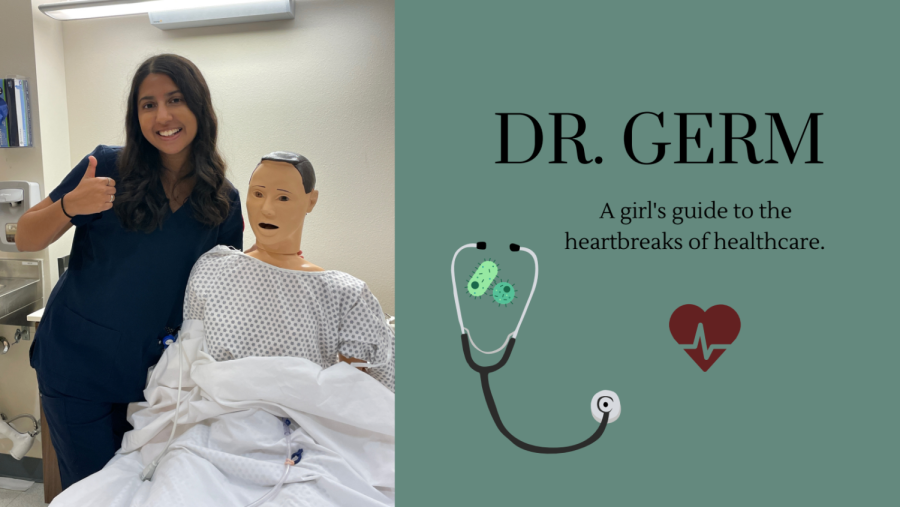In this weekly blog, staff reporter Shannon Christian writes about the myths of healthcare and how it impacts students.
Dr. Germ: emerging emergencies
911 is the number that almost everyone has memorized from a young age.
For emergencies, like when someone is unresponsive, or there is a criminal matter at hand like an active shooter; emergency services can be contacted with this number.
On the other side of the scene, the ambulance is propelled into action in order to bring aid to whoever is in imminent danger or harm. Stocked with medical supplies, ambulances serve as Mobile Intensive Care Units, MICUs. Inside of each MICU is a stretcher bed, and EMTs assist whoever is placed upon that stretcher.
As a certified nurse aide, part of my rotation last week was to attend ambulance ride-alongs. My past rotations at hospitals included emergency department shifts, but usually, those patients had already been triaged, or assessed by the EMTs, or their situation was serious, but not as emergent and time sensitive.
I’d never been in the back of an ambulance rig and expected it to be extremely chaotic. I do not consider myself very well prepared in emergency situations, but I have had interest in trauma medicine because of its very unpredictable nature. I find myself nervous about emergency room procedures, so I was very anxious when my fire station received an emergency call.
I sat in the back of the rig with an observer vest on as the sirens started up, and the EMT team got situated in both the engine truck and the MICU. We had arrived at the patient’s home, and brought a young man onto a stretcher who was experiencing intense chest pain. The EMTs were able to lift the man easily, and as soon as the stretcher was situated back into the ambulance, they began to work by running vitals tests and an EKG.
It was incredible to see the team work with diligence and precision, eliminating a sense of chaos. An EKG was able to be run on the patient, and normal rhythm was identified. When we transported the patient from the MICU to the emergency room, they were stable, and immediately seen by the emergency room physician.
I wouldn’t pursue a career in trauma medicine, but by witnessing an emergency unfold before me, I was able to understand the intricacies of emergency procedures and how much training goes into handling them.
